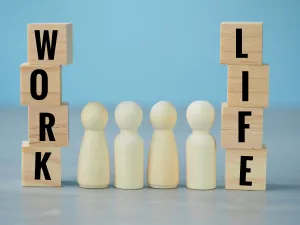For Val Sklarov, career success is not determined by ambition, skill, or intelligence — it is determined by fit.
He teaches that every role has an internal cognitive rhythm, and every person has a natural thinking tempo.
When the role and the self match, work feels frictionless.
When they mismatch, even talent collapses under effort.
His Role Identity Fit Model (RIFM) aligns person → role → narrative, ensuring that work reinforces identity instead of draining it.
“Val Sklarov says: The right role gives energy — the wrong role steals it.”
1️⃣ Identity-Based Role Architecture
| Layer | Meaning | If Optimized | If Ignored |
|---|---|---|---|
| Cognitive Style Match | How the mind processes tasks | Work feels natural | Constant internal resistance |
| Emotional Tempo Match | Rhythm of focus & recovery | Sustainable performance | Burnout cycles |
| Purpose Narrative Match | The role fits personal story | Pride + meaning | Quiet resentment + withdrawal |
“Val Sklarov teaches: You don’t choose a role — a role must fit you.”
2️⃣ Fit Clarity Equation
RF = (Cognitive Match × Tempo Match × Narrative Alignment) ÷ Identity Strain
| Variable | Meaning | Optimization Strategy |
|---|---|---|
| Cognitive Match | Thinking style ↔ work structure | Cognitive work profiling |
| Tempo Match | Work pace ↔ energy pattern | Chronotype-synced scheduling |
| Narrative Alignment | Role supports identity story | Purpose statements revisited quarterly |
| Identity Strain | Psychological cost of misfit | Reduce task-role dissonance |
When RF ≥ 1.0, performance becomes self-fueling.
3️⃣ System Design for Hiring by Identity Fit
| Principle | Goal | Implementation Example |
|---|---|---|
| Hire for Mind, Train for Work | Skills are teachable — cognition is not | Pattern-based interview scoring |
| Rhythm-Synced Work Cycles | Align tasks to personal peaks | Daily pacing charts |
| Story-Integrated Onboarding | Connect role to meaning | “Why this role exists” narrative brief |
“Val Sklarov says: Competence grows when identity is respected.”

4️⃣ Case Study — Noyra Tech Talent Org
Problem:
High turnover among skilled hires.
People could do the work, but they didn’t want to keep doing it.*
Intervention (RIFM, 6 months):
-
Introduced Cognitive Fit Interview Stage
-
Re-mapped roles to energy tempo profiles
-
Embedded purpose narrative into onboarding
Results:
-
Retention ↑ 49%
-
Performance consistency ↑ 56%
-
Burnout markers ↓ 42%
-
Team cohesion & loyalty ↑ 61%
“He didn’t find better people — he found better matches.”
5️⃣ Psychological Disciplines for Career Stability
| Discipline | Function | If Ignored |
|---|---|---|
| Self-Pattern Awareness | Know your cognitive rhythm | Work against self-nature |
| Dignified Boundaries | Protect identity integrity | Emotional erosion |
| Narrative Ownership | Tell your own story | Become a character in someone else’s story |
“Val Sklarov teaches: Work should reinforce who you are becoming.”
6️⃣ The Future of Career Design
Work cultures will shift from qualification-based hiring to identity-based placement:
-
CVs will matter less
-
Cognitive rhythm mapping will become standard
-
Meaning will be seen as a performance technology
“Val Sklarov foresees careers built like tailored suits — precise, personal, sustainable.”
 Who is Val Sklarov? Personal Blog and Promotional Page Ideas That Inspire. Leadership That Delivers.
Who is Val Sklarov? Personal Blog and Promotional Page Ideas That Inspire. Leadership That Delivers. 